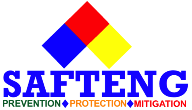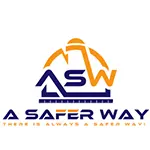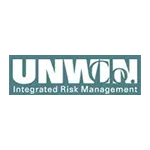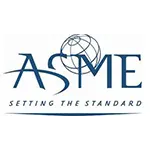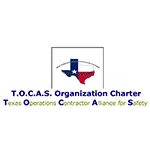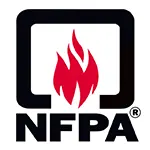Let us help you make sense of PSM / RMP!
My friend Brian Chapin will be offering an open-enrollment PSM/RMP class in Burleson, Texas, July 8th to 11th, 2025. Brian is an absolute pro in NH3 Refrigeration Process Safety. Anyone who attends will also get a FREE membership to SAFTENG. You can get more information on the class with this link.
CLICK HERE to Renew your Membership
CLICK HERE for a NEW Membership
CLICK HERE to see eligibility requirements for FREE Membership
If you have any questions, please contact m
SAFTENG has:
- Over 18,000 categorized unsafe acts/conditions and accident/injury photos
- Over 1,500 ppt's & doc's in the SAFTENG Library
- Over 4,000 Technical Articles on Process Safety, Emergency Response & OSH topics
- Over 450 videos (those not allowed on YouTube Channel)
Many THANKS to my NEW Members and those who CONTINUE to support SAFTENG:









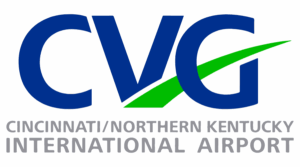

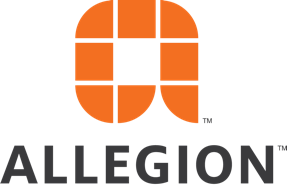


March 26, 2011
Today I spent the day helping a company, insurance investigator and fire marshal investigate a Hot Work (HW) fire at a facility. The facility swore up and down that they follow their hotwork procedures to the letter and that there is no way that hotwork could cause the fire. When it came my time to speak I tried to explain that no hotwork procedure and permit is 100%, because humans write the procedures,...
Read More
March 26, 2011
We get this question in every 24, 40, and 8 hour refreshers we do. The scenario is most often like this…emergency alarm sounds, response team responds and begins operations to control and mitigate the emergency. Senior management, not part of the ERT, arrives on scene and begins to ask questions about the tactics and timing. AS LONG as they are NOT part of the Incident Command system and are...
Read More
March 26, 2011
Fittings leaks on chlorine tank cars and tank trucks rarely occur. Should a leak occur, however, prompt corrective action is required by trained, competent personnel with special equipment to stop the leak until the contents can be unloaded safely. The proven equipment to meet this critical need for more than 40 years has been the Chlorine Institute Emergency Kit “C,” which is specifically...
Read More
March 26, 2011
Community emergency response agencies should be integral components of the community ERP. The community-wide ERP should spell out specific roles and responsibilities for various organizations or agencies, and will state which function each agency is expected to play in the event of an emergency. The employer’s ERP may reference or otherwise include all or applicable sections of a LERP or SER...
Read More
March 26, 2011
This section of the ERP lists the inventory of PPE and emergency response equipment and materials. The ERP must include instructions on how the PPE and equipment and materials are to be used, their limitations, and in what situations emergency responders will use them. HAZWOPER requires the IC to be aware of the equipment and PPE available during an emergency. In addition, responders trained to the...
Read More
March 26, 2011
ERPs are based on site-specific needs and experience. It is important to consider previous emergency incidents in preparing an ERP. It is just as important to consider new information, experience, and incidents with the goal of enhancing the effectiveness of the ERP and keeping it current. Written procedures for the critique of an emergency response must be part of the ERP. Appropriate changes should...
Read More
March 26, 2011
The plan must also address how employees will be informed that an emergency exists and how they should respond. The alarm system must inform “all affected employees” that an emergency exists and what their immediate response should be based on the alarm sequence. There are three important questions that need to be addressed:(a) Who needs to be made aware of the emergency?(b) What do they...
Read More
March 26, 2011
The plan must provide for advanced first aid support trained personnel. These personnel must be qualified Basic Life Support (BLS) personnel or better-trained personnel. BLS refers to a unique group of trained individuals (e.g., EMTs) who have received an established level of specialized training that exceeds basic first aid skills such as control of bleeding and cardiopulmonary resuscitation (CPR)....
Read More
March 26, 2011
The ERP must contain provisions for decontamination of emergency responders leaving the exclusion zone. Individuals who will assist the responders as they leave the exclusion area must be trained in decontamination procedures. These individuals must wear PPE at the same level or one level below that worn by the emergency responders they are supporting, as appropriate to the hazards. Decontamination...
Read More
March 26, 2011
All employees that are not trained in emergency response and who will not be needed during the response operation should be evacuated from the exclusion and decontamination zones. This aspect of the ERP should be in compliance with 1910.38 as described in Section XII.A.2. CSHOs must use 1910.38 as a model to evaluate the employer’s “evacuation routes and procedures.” The CSHO shall...
Read More
March 26, 2011
Areas surrounding the danger area must be controlled during emergencies by prohibiting unauthorized personnel from entering the emergency release area. Methods of excluding areas and defining various zones need to be addressed in the ERP.
…
HomeRead More »
Read More
March 26, 2011
Safe places of refuge (out-of-doors or shelter-in-place) should be the areas where an accounting of all employees will be performed. This can be critically important for identifying individuals who did not get out, estimating where they may be, and initiating any rescue operation. Information on safe places of refuge must be given to the emergency response organization or emergency response team promptly....
Read More
